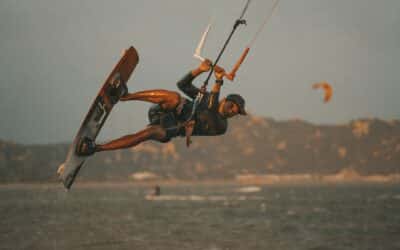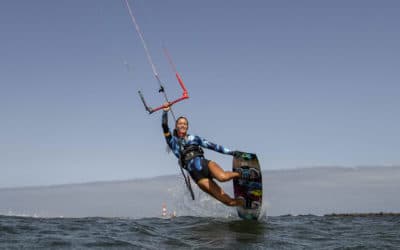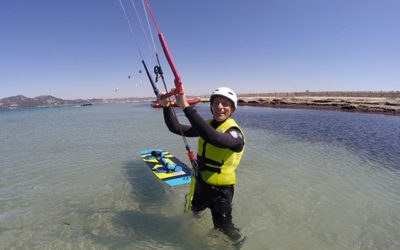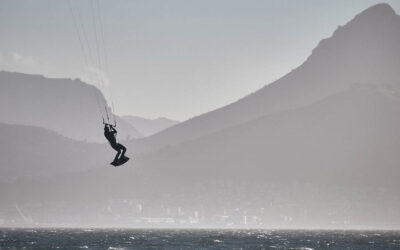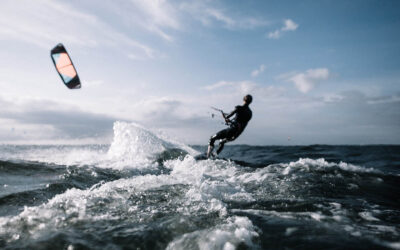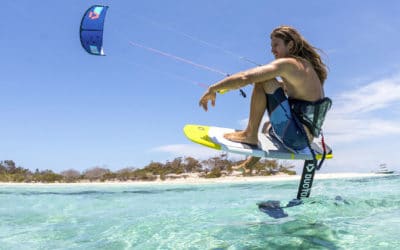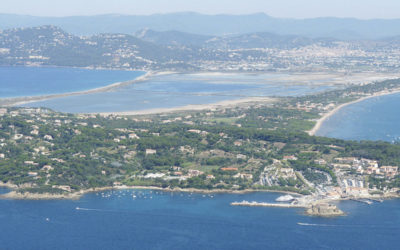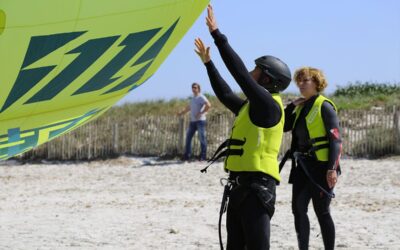How to choose your kite?
Contrary to appearances, kitesurfing is an accessible sport that can be learned quite quickly without the need for exceptional physical condition. However, there are a few things you need to know before starting this discipline. First of all, what equipment do you need?
Kitesurfing equipment consists of a board, a sail called a kite and ropes, called lines, which are attached to a bar connecting it to the kite. All of this allows the surfer to glide through the water using the force of the wind.
In this article we will look at the kite.
What is a kite made of?
The fabric is very thin, but strong, like a parachute. The wing has no rigid elements, both to optimise its weight and to guarantee the safety of the user. Only inflatable bladders at the front and back make the kite more rigid.
The different kites
There is a wide choice of kites on the market. Specialist brands have a range of about five different models. Ideally, you should buy two or more kites to ride in all conditions, but for a beginner kiteboarder, one kite is sufficient for training on flat water in light winds.
Even if you have been kitesurfing for a long time, choosing the right kite is always a tricky task. Each model corresponds to a different practice and has its own technical characteristics for a specific sailing program: freestyle, wave, surf, speed… Brands often offer both high performance kites for a particular discipline and multipurpose kites.
There are two main categories of kites: specific kites (C-kites, wave kites, single-bladed kites) and hybrids. C-wings are highly sought after by freestyle riders. Wave kites are dedicated to surfing. The mono-batts are very light. Hybrids represent the majority of the world market.
The surface of a kite varies from 5 to 17 m².
How to choose your wing
The investment is quite substantial and it is better not to make a mistake. The most important thing is that the wing is adapted to your level and size. When learning this sport (it is strongly advised to do one or more courses!), the instructors will have given each participant the appropriate equipment. It is preferable to use, at the beginning, the same wing as during the training. This will allow you to feel more comfortable right away.
In order to progress without getting discouraged, you should not overestimate your level and want to go too fast. The beginner will choose a hybrid wing, i.e. a multipurpose wing. This is the most commonly used wing, as it is easier to handle and more stable. A good beginner’s wing has a moderate speed. A wing that is too fast will cause you to fall at the slightest error on the bar. C-kites are for the more experienced kiteboarder.
Another important factor is the weight of the kiter. The lighter the person, the smaller the kite. For example, a 60 kg surfer will choose a 10 m² C-kite or a 9 m² hybrid kite. An 80 kg surfer would choose a 14 m² C-wing or a 12 m² hybrid.
Finally, the choice of kite will be refined with the question of the weather conditions. Indeed, we practice kitesurfing differently depending on the place where we are. The strength and type of wind: light, constant, predictable, gusty… are to be taken into account. A wind of force 3 to 4, blowing steadily in the same direction, is ideal. For an average weight surfer (75 kg), in summer, with a light wind, a 12 m² kite will be preferable. In the mid-season, a 9 m² kite would be best, and in winter, a 7 m² kite.
It is also worth noting that it is better to buy a kite and a bar from the same brand. The equipment is not always compatible depending on the manufacturer.
Be careful not to look only at the financial side when investing in a kite. Even if the price is high, you should choose a reputable brand of kite, adapted to your level, your weight and your type of practice to avoid getting discouraged too quickly.
Search
Catégories
Recent Posts
Suivez-nous !


